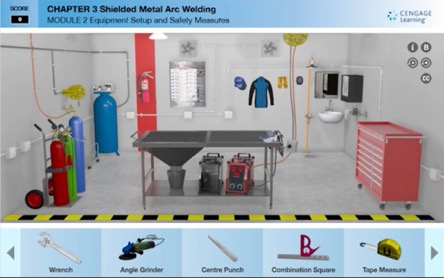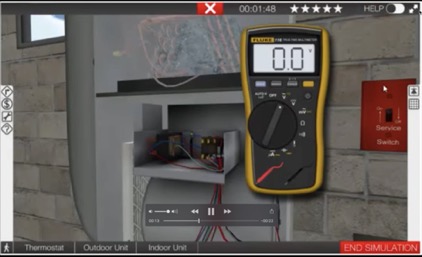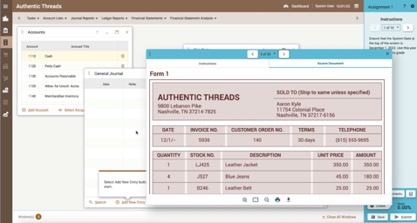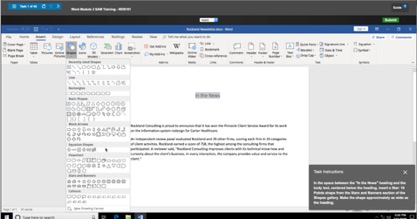Click here to see available CTE Hands-on online simulations across the career clusters.
Simulation and virtual reality as a means for professional training is becoming more common each year, especially in businesses that want employees to practice real-world professional communication, team training, and test how they handle stressful situations. For example, NPR had a story this past October that described the Virtual Human Interaction Lab software that Walmart has since purchased to train over a million employees.
But simulation technology isn’t only available for multi-billion dollar companies and doesn’t require hundreds of VR goggles. In secondary Career and Technical Education classrooms, simulations can offer students the chance to experience real-world scenarios and procedures in a safe environment before they get in the lab or shop with limited equipment.
Safety Training
The American Red Cross has introduced simulation training for students to practice safety standards during real-world scenarios. Other educational simulations can be used for technical trades training that is typically learned during shop time.
While many trades require students to get plenty of time completing skills in-person to build muscle memory and feel comfortable on the job, simulations can help prepare students for other aspects of job. For instance, welding students need to be in the shop to practice the weld, but simulations can offer practice in the pre-work like reading blueprints and setting up safe workspaces, as well as post-weld activities like analyzing welds for mistakes.

Troubleshooting Practice
While some CTE programs may be lucky to have multiple computers in PC Repair programs or furnaces, air conditioners, or automobiles to work on in the lab or shop, most don’t have the chance to house all examples of equipment for students to practice all of troubleshooting scenarios they need for certification or to do the job. Simulations are able to give students practice with many more possible faults and scenarios in real-time.

Professional Software Training
Many career pathways and potential jobs require that students are either certified in, or can use professional software to solve problems. Traditionally, step-by-step projects and screenshots can give students some practice using software, but with cloud versions of software many teachers find it difficult to keep up with new software updates and changes in the interface.
These kinds of assignments often take an extremely long time to grade or are difficult for teachers to see where students may have made mistakes throughout the assignment. Simulated experiences in professional software allow for student attempts at even multi-part assignments. Thus, making it easier for the teachers to be recorded or even offer a report that breaks down all the steps the student took within the assignment, making it easy for teachers to find where students went wrong and help them correct the skill.


Simulations may be the most cost-effective way to provide students access the wide variety of experiences they need to be prepared for real-world situations. As simulation training and testing becomes even more prevalent in the professional space, using simulation training appropriately can also be a career skill we can focus on in high school.
Click here to see available CTE Hands-on online simulations across the career clusters.
